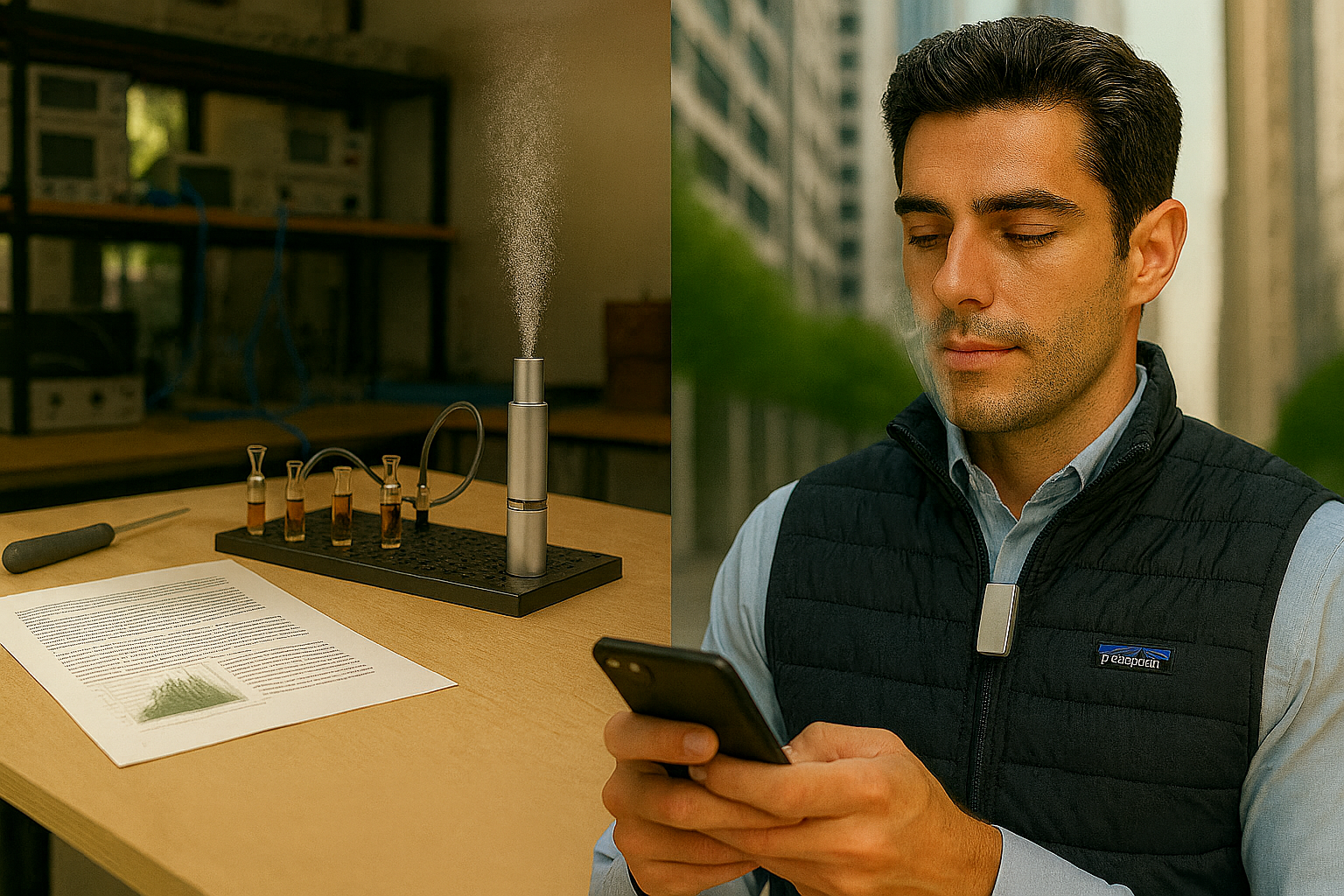Fragrance Innovation: Tech & Research That’s Real
From gesture-triggered scents to near-animal-speed odor sensing - what’s truly next.
When people imagine the future of fragrance, it often slips into science fiction. But the real future is unfolding in academic labs, peer-reviewed journals, and design conferences. Researchers are already prototyping olfactory actuators, gesture-controlled diffusion, and scent-aware textiles. These findings don’t just live in papers - they shape what the fragrance industry, consumer tech, and retail could look like within just a few years.
Here’s a glimpse into research that is actively building the foundations of scent’s next chapter.
1. Millisecond Odor Emitters - The Speed of Molecule Diffusion
New olfactory actuators reported in Nature Communications (2024) can deliver scent bursts in milliseconds, using just milliwatt power. That’s as close as research has come to matching the natural speed of smell perception. This opens the door for compact, responsive devices - think phones, wearables, or VR systems that can deliver fragrance cues without clunky mechanics. This molecule diffusion technology is bringing us closer to seamless, real-time scent experiences. The ability to trigger scents at such high speeds will create more immersive and interactive environments for users.
2. Gesture Sensing Scent (CHI ’25)
At the ACM CHI conference, researchers are prototyping gesture sensing systems for scent activation. Imagine waving your hand in mid-air to release a spritz in virtual reality—no buttons, no clunky hardware. It’s interaction design meeting olfaction, making scent feel as natural and intuitive as touch. This gesture-triggered scent system allows for fluid, natural control of fragrance experiences, making it an essential part of future tech interfaces. As olfactory adaptation continues, we’ll see more intuitive and personalized scent designs integrated into our daily environments.
3. Environmental Scent Displays - Creating an Olfactory Image in Real-World Spaces
Beyond personal devices, experiments in room-scale scent projection (AroMR, ACM Digital Library) are creating ambient odor zones in mixed reality. Instead of wearing a device, the space itself becomes the display - letting designers choreograph olfactory experiences across environments like galleries, classrooms, or retail. The ability to craft an olfactory image within a physical space not only transforms the way we experience fragrance but also enhances the mood and interaction with products. These smart fragrance diffusers create dynamic scent environments that change in response to the space and context.
4. Mood-Linked Diffusion - Smart Textiles and Scent Technology
Academic research into smart textiles and app-synchronized diffusers points to a future where scent blends shift dynamically with emotional or biometric cues. A shirt infused with aroma microcapsules, paired with a diffuser that syncs with your stress levels or circadian rhythm, could turn fragrance into an adaptive wellness ecosystem. This smart fragrance diffuser technology could revolutionize how we interact with scents, making them an active part of our daily routines and emotional states.
Why this matters
These aren’t distant “what-ifs.” They’re early signals from peer-reviewed work that brands, retailers, and designers can track today:
Retail Sampling Reimagined → Gesture-triggered scent bars could remove clutter, fatigue, and hygiene concerns.
New Experience Channels → VR, exhibitions, and museum pop-ups can integrate smell as a social amplifier.
Future Product Pipelines → From breathable fragrance clothing to daily-mood diffusers, the prototypes already exist in academic labs.
The Outlook - Olfactory Adaptation in the Age of Innovation
Academic research shows what is technologically possible, but that is only the first step. To reach the market, an idea needs product market fit and the right brand alignment. The concept has to feel authentic to the brand and relevant to its audience. On top of that, the user experience should be intuitive, engaging, and even fun. That is what turns a technical possibility into something people actually embrace.
With molecule diffusion, the technology behind fragrance is becoming smarter, faster, and more personalized. As smart fragrance diffusers continue to evolve, they will unlock new possibilities in fragrance design, giving us unprecedented control over how we experience scents in both our personal and shared spaces.

